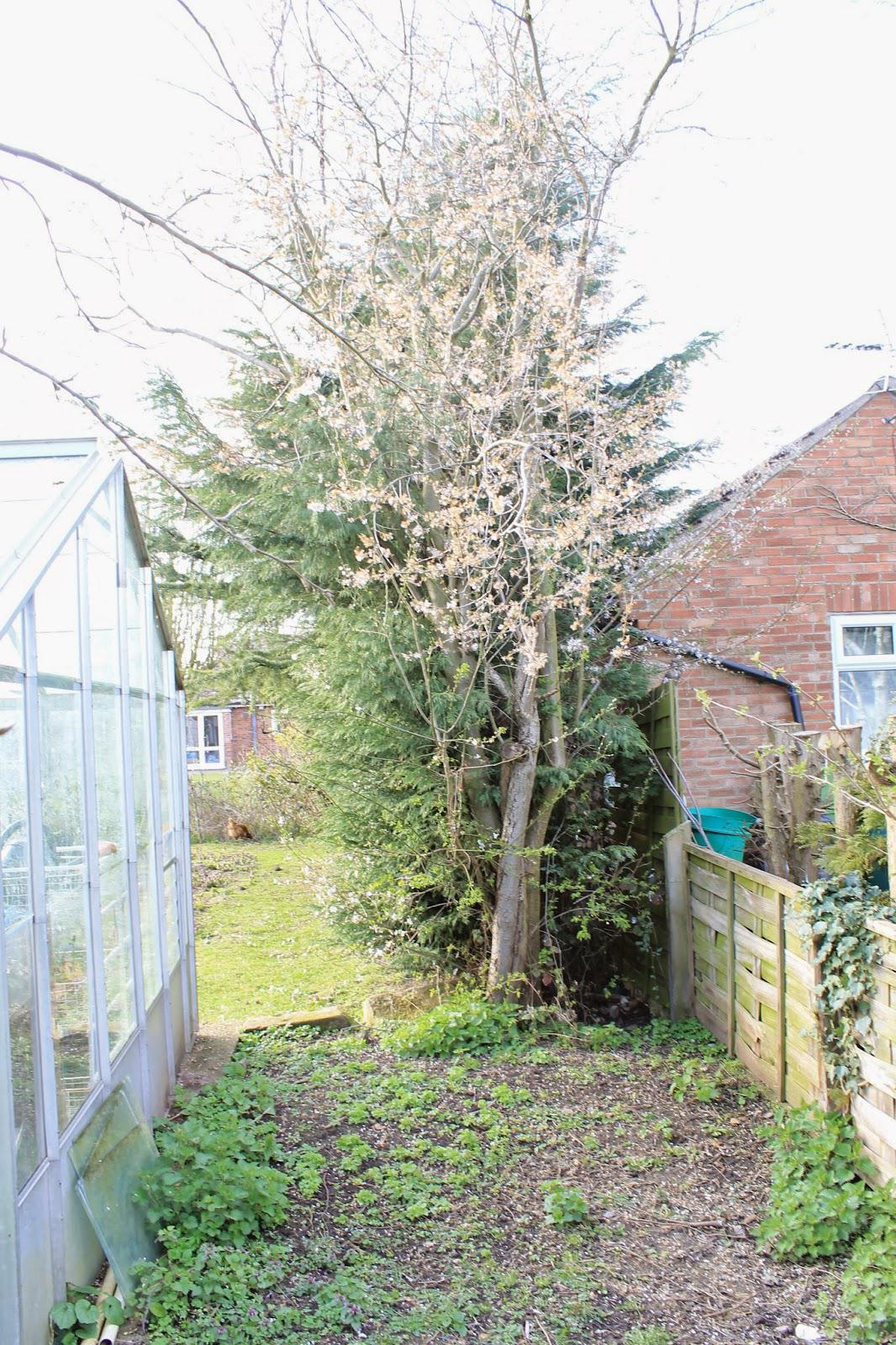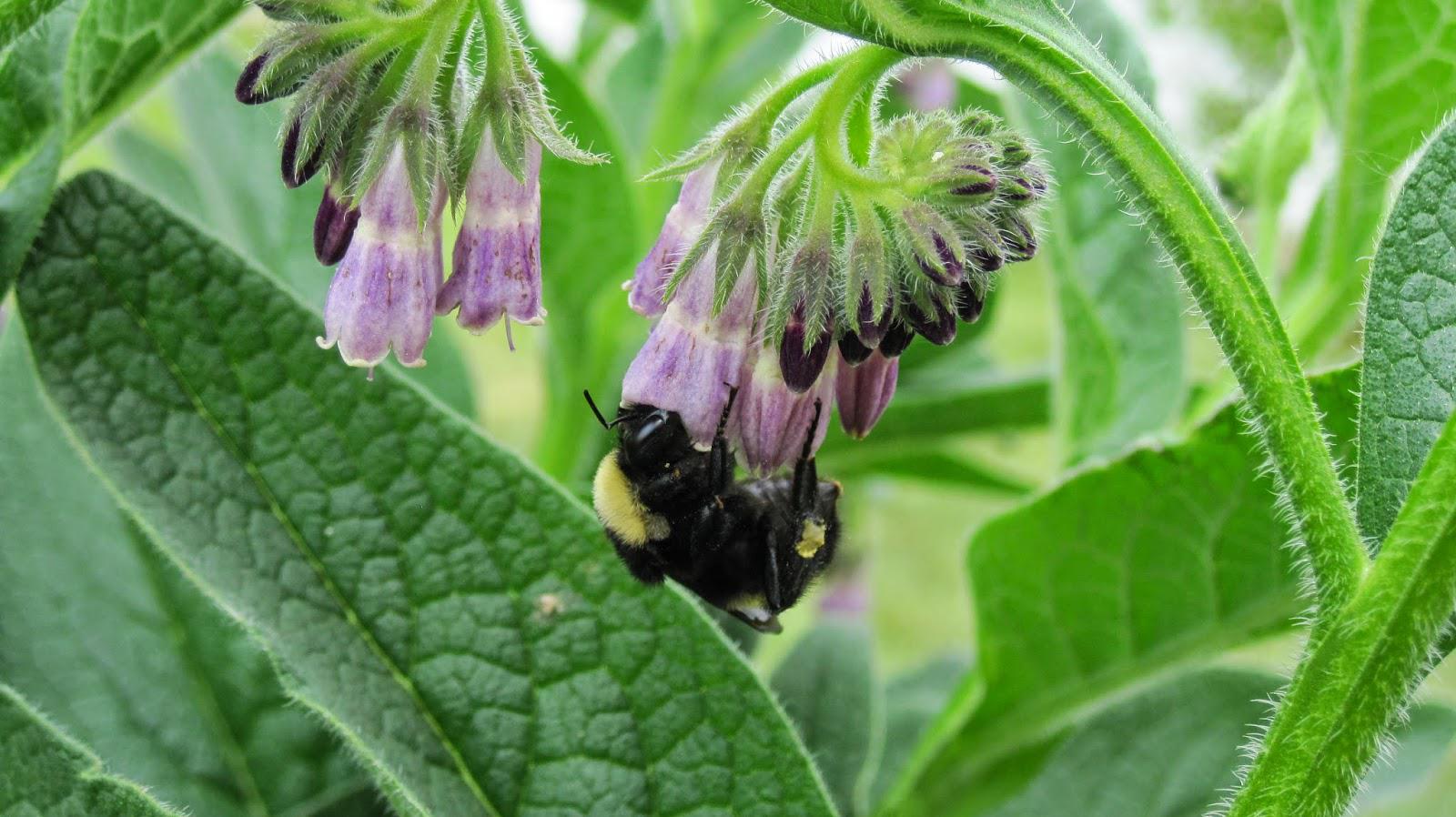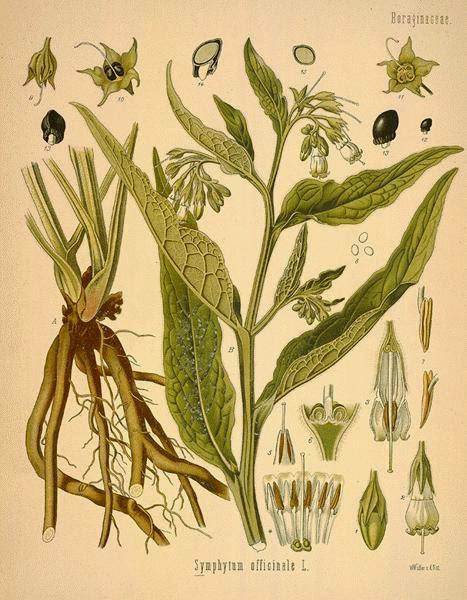Comfrey (Symphytum officinale)
 Comfrey (Symphytum officinale) is a wonder plant. It is a dynamic nutrient accumulator, drawing minerals out of the soil and into the roots and leaves. It is also a compost enricher and accelerator, a nutritious ingredient in liquid manures (comfrey tea, similar to nettle tea below). Comfrey is also a beneficial insect attractor, mulch, weed suppressant (it can be used as a border around vegetable plots to stop the paths getting overrun with weeds), biomass accumulator, livestock forage, edible, a wound healer and it was traditionally called 'knit bone' by herbalists as it helps heals fractures and soft tissue injuries (owing principally to its allantoin content). It's an ideal permaculture plant. Image credit: Public Domain, no ownership
Comfrey (Symphytum officinale) is a wonder plant. It is a dynamic nutrient accumulator, drawing minerals out of the soil and into the roots and leaves. It is also a compost enricher and accelerator, a nutritious ingredient in liquid manures (comfrey tea, similar to nettle tea below). Comfrey is also a beneficial insect attractor, mulch, weed suppressant (it can be used as a border around vegetable plots to stop the paths getting overrun with weeds), biomass accumulator, livestock forage, edible, a wound healer and it was traditionally called 'knit bone' by herbalists as it helps heals fractures and soft tissue injuries (owing principally to its allantoin content). It's an ideal permaculture plant. Image credit: Public Domain, no ownership
Even though comfrey has long been esteemed as a vulnerary (wound healer), it has had some safety concerns over a class of alkaloids which it contains called pyrrolizidine alkaloids (PA’s). This came as shock to the herbalist community because comfrey has long been regarded as one of the safest herbs. PA’s are believed to be hepatoxic (toxic to the liver). Using comfrey externally as a poultice or as a compress has always been safe. However recent scientific studies indicate that comfrey, when ingested in large amounts and over long periods of time might cause liver damage. These pyrrolizidine alkaloids occur in a number
of other plants as well, including ragwort, borage, and coltsfoot.
 It is possible to make a comfrey root and lavender ointment, which can be successfully used to treat bruises, greenstick fractures, cartilage, tendon and ligament wrenches, and skin problems. The ointment is also very good for deep tissue massage as it provides a viscous, healing medium which also contains beeswax and olive oil. Whilst the leaves can be used for a great tasting tea internally, the root is best used externally just to be on the safe side.
It is possible to make a comfrey root and lavender ointment, which can be successfully used to treat bruises, greenstick fractures, cartilage, tendon and ligament wrenches, and skin problems. The ointment is also very good for deep tissue massage as it provides a viscous, healing medium which also contains beeswax and olive oil. Whilst the leaves can be used for a great tasting tea internally, the root is best used externally just to be on the safe side.
In permaculture design, you can identify a marginal area which would benefit from comfrey cultivation (see above). The soil above is damp, rich, and suitable for harvesting roots. Growing comfrey would eliminate other less useful plants owing to its vigour and the size of its leaves. The area above is otherwise a 'neutral' space which would be hard to cultivate other plants owing to the low light intensity, and proximity of the greenhouse. Photo Credit: Andy Patterson

Comfrey has become an important plant for the organic and permaculture gardening movement. It has quite fleshy thick roots which can penetrate deep into most soils, accessing minerals below the surface and making potassium and nitrogen widely available. The leaves grow very quickly and should be cut a few times every year for making organic slug control, comfrey tea fertilizer/ compost activator, compost or leaf mould. Credit: Cassie from Comfrey and the Bee - http://www.lifetransplanet.com/2010/06/03/comfrey-and-the-bee/ If your horticulture passion is to know more about Herbs and their benefits and how they effect the human body why not consider the many ADL online courses in Herbs and our
Ebooks in Horticulture. Not sure about committing to a course of study, try as a taster first one of our short 20 hour weekend courses.

References
The Ornamental Kitchen Garden. Geoff Hamilton. BBC Books, 1990.
Medical Herbalism: The Science and Practice of Herbal Medicine. David Hoffmann FNIMH AHG. Healing Arts Press, 2003
Permaculture: A Designers' Manual. Bill Mollison. Tagari Publications; 2nd edition, 1988.
Image credit: Botanical.com